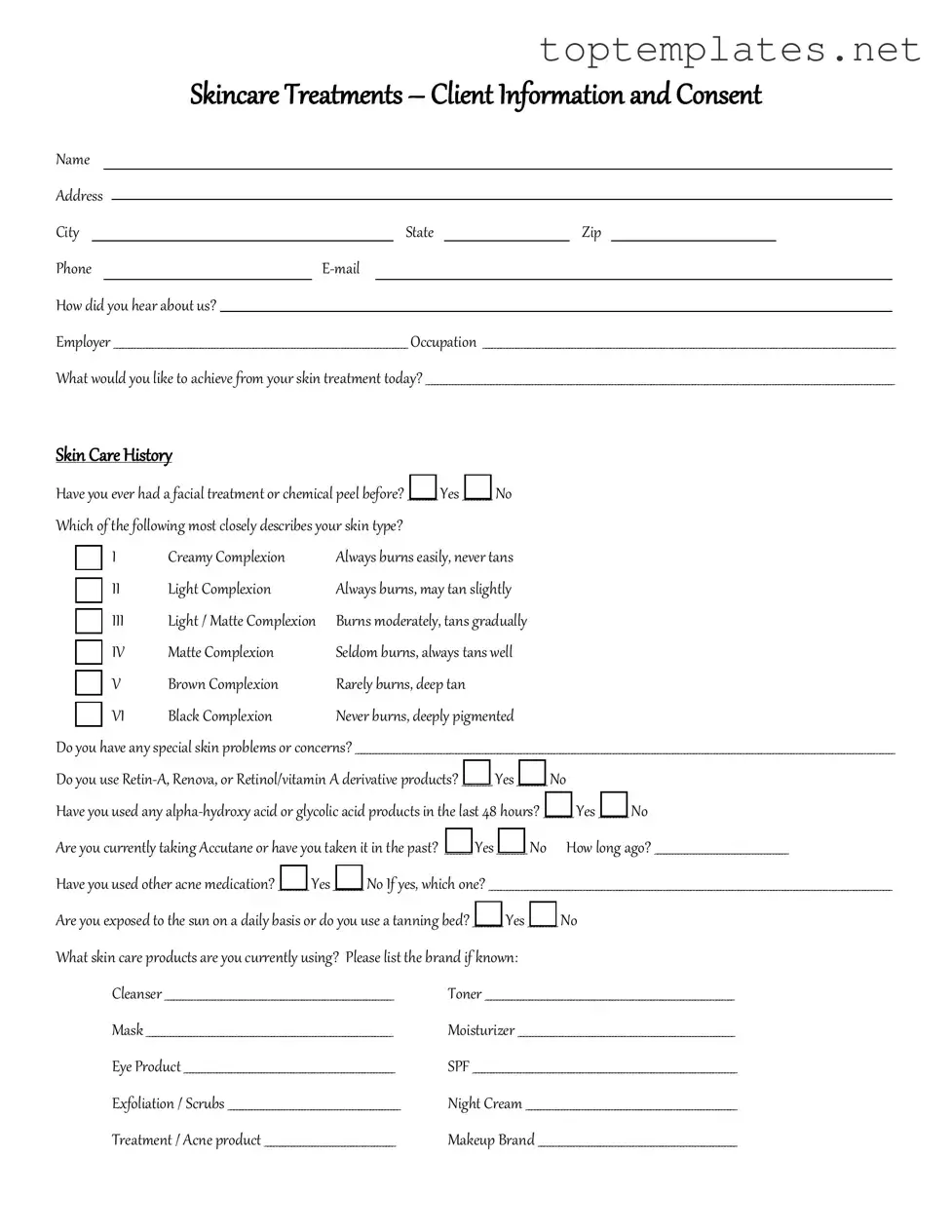What is a Facial Consent Form?
A Facial Consent Form is a document signed by a client before undergoing a facial treatment, ensuring they understand the procedures, potential risks, benefits, and aftercare instructions. It serves to protect both the client and the practitioner by establishing informed consent.
Why do I need to sign a Facial Consent Form?
Signing a Facial Consent Form is necessary to acknowledge your understanding and agreement to the terms of the facial treatment you are about to receive. It's a way to ensure transparency between you and your practitioner about what to expect, including any possible side effects or risks associated with the treatment.
What information is typically included in a Facial Consent Form?
A typical Facial Consent Form includes details about the facial treatment, potential risks and benefits, aftercare instructions, personal health history of the client to ensure suitability for the treatment, and a declaration of consent by the client to proceed with the treatment.
Can I withdraw my consent after signing the Facial Consent Form?
Yes, consent is not binding, and you can withdraw it at any time before the treatment begins. It's essential to communicate with your practitioner if you have any second thoughts or concerns after signing the form.
What should I consider before signing a Facial Consent Form?
Before signing, carefully review the details of the treatment, understand the potential risks and benefits, consider your health history, and ensure you have disclosed any allergies or medical conditions to your practitioner. Feel free to ask questions or request clarification on any aspect you're unsure about.
Will the information I provide be kept confidential?
Yes, the information collected through the Facial Consent Form is confidential and will be handled in accordance with privacy laws and regulations. It's used solely for the purpose of ensuring the safety and effectiveness of your treatment.
How long is my consent valid?
Consent is typically valid for the specific treatment session for which you've signed the form. For subsequent sessions, even if they're the same type of treatment, you may need to sign a new consent form or update the existing one, depending on the practitioner's policy.
Is a Facial Consent Form legally binding?
While the Facial Consent Form serves as a legal document indicating your agreement to receive treatment under specified conditions, its main purpose is to promote understanding and clear communication between the client and practitioner. It also outlines the responsibilities of both parties.
What happens if I decide not to sign the Facial Consent Form?
If you choose not to sign the Facial Consent Form, the practitioner may refuse to perform the treatment. This policy is in place to ensure the safety and informed consent of all parties involved.
Who should I contact if I have questions about the Facial Consent Form?
If you have any questions or need further clarification about the Facial Consent Form, it's best to discuss them directly with your practitioner. They can provide detailed answers tailored to your specific treatment and any personal concerns you might have.


